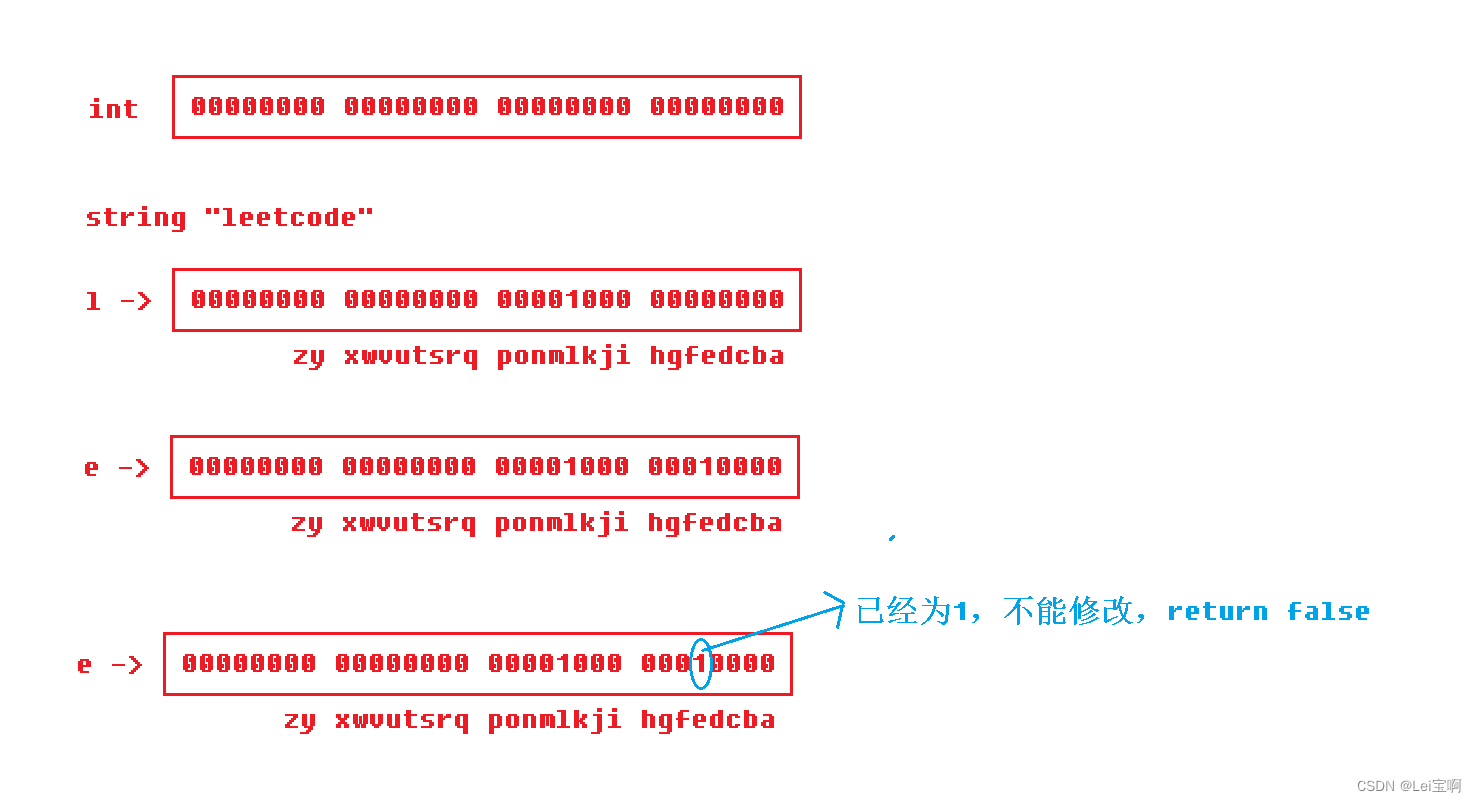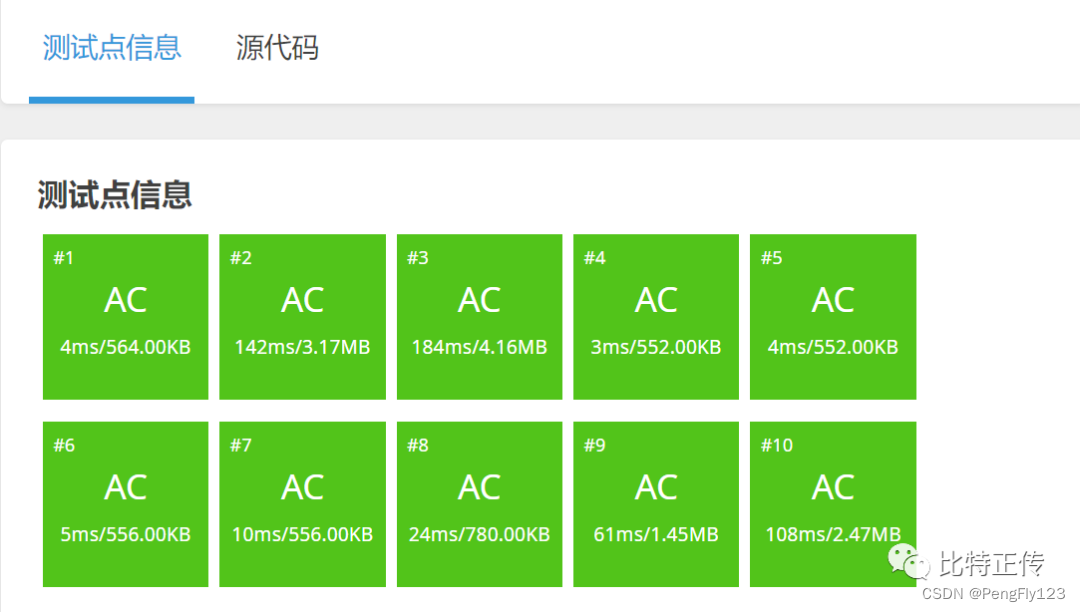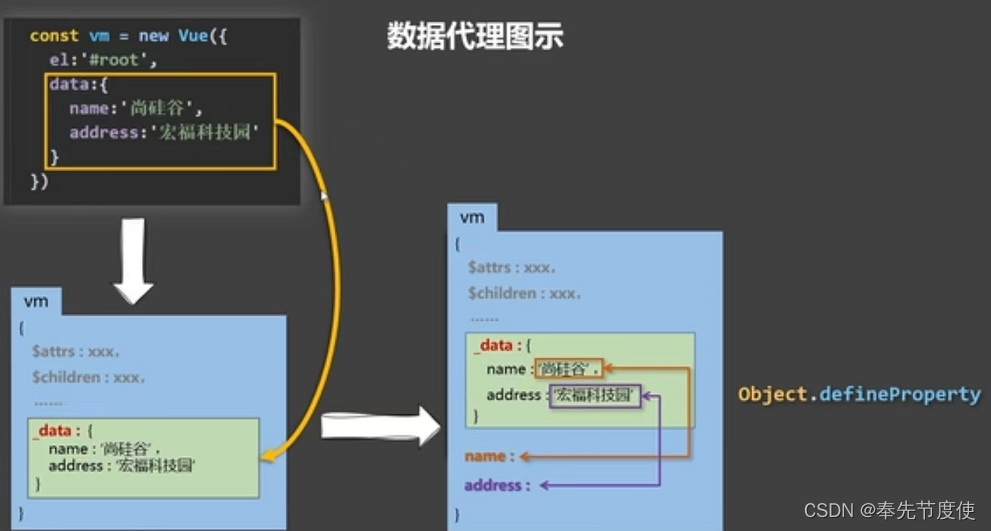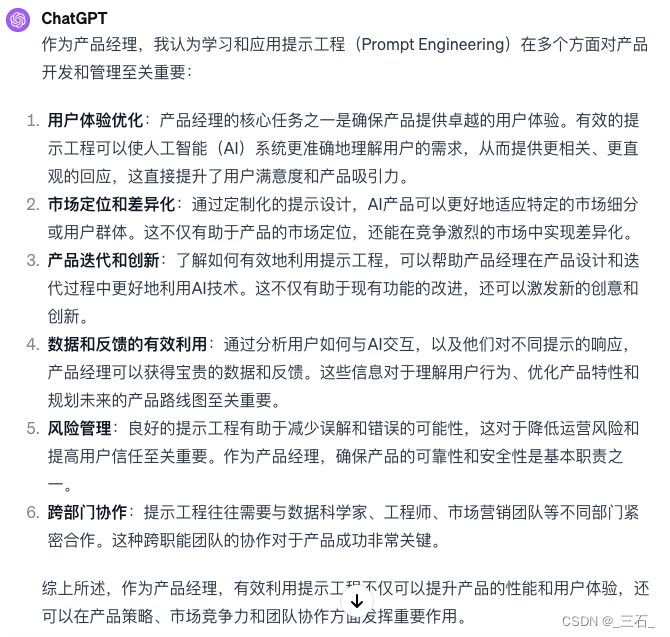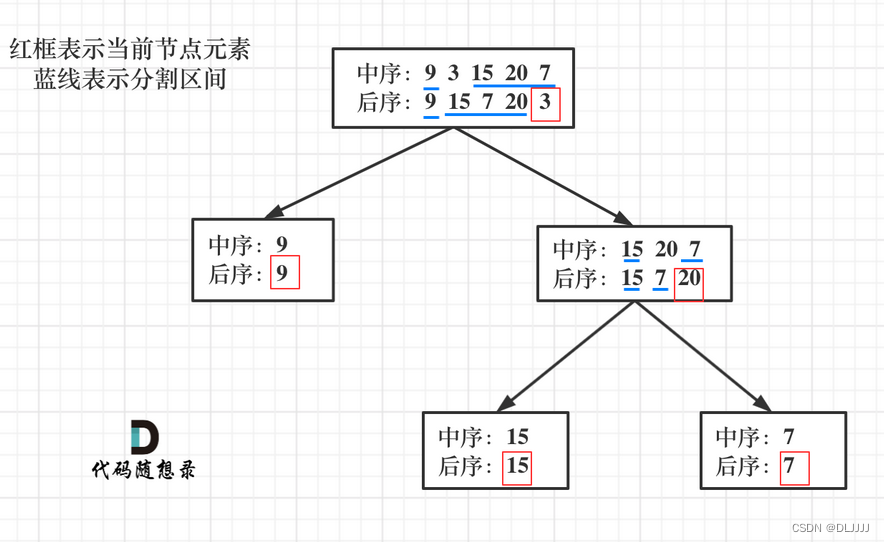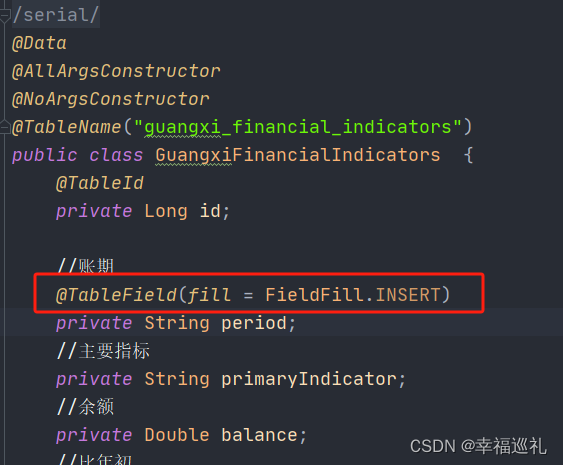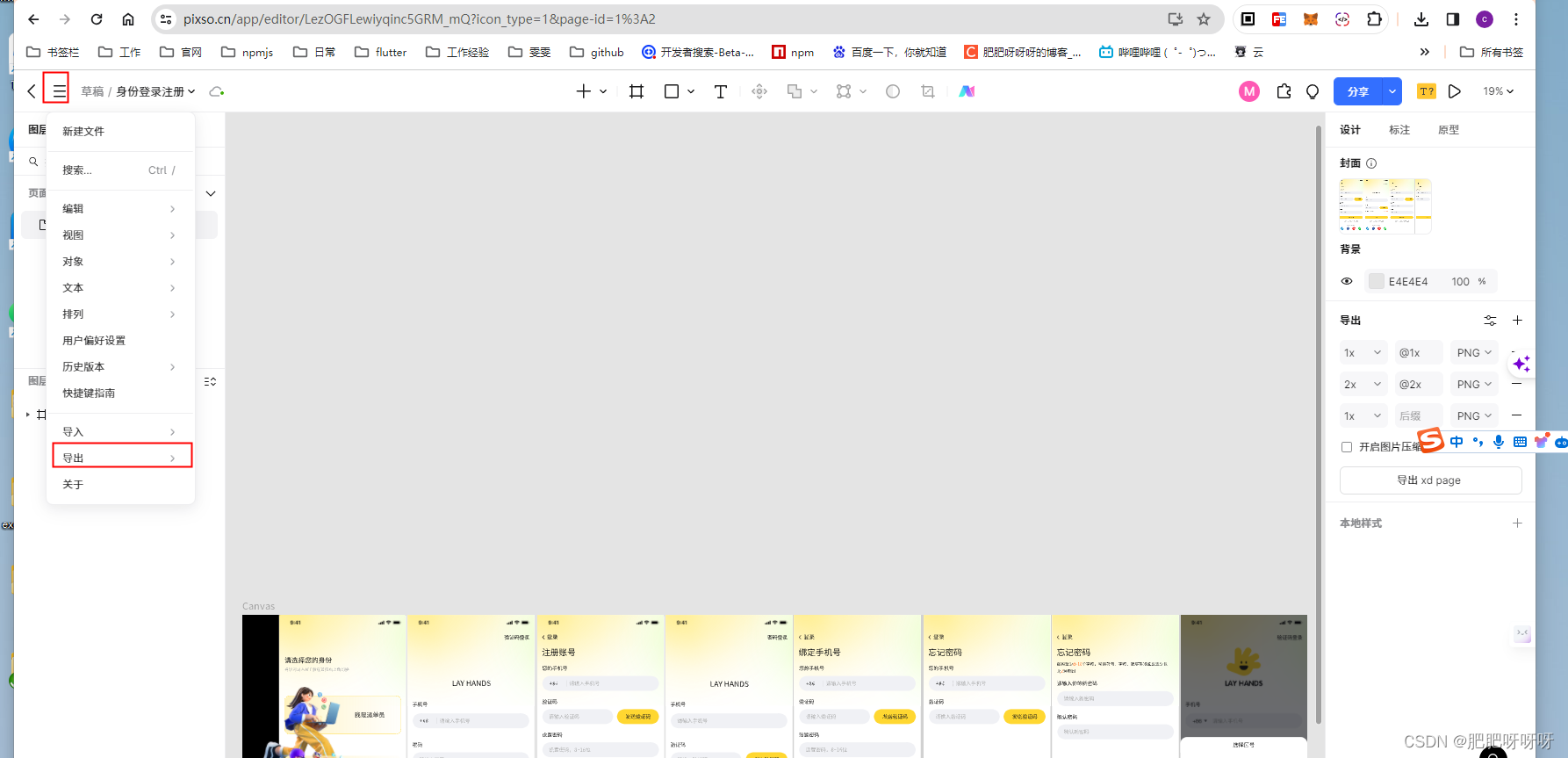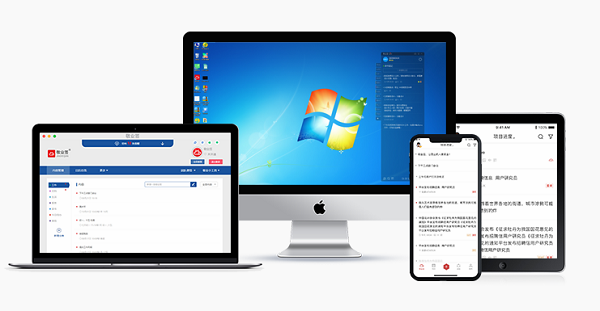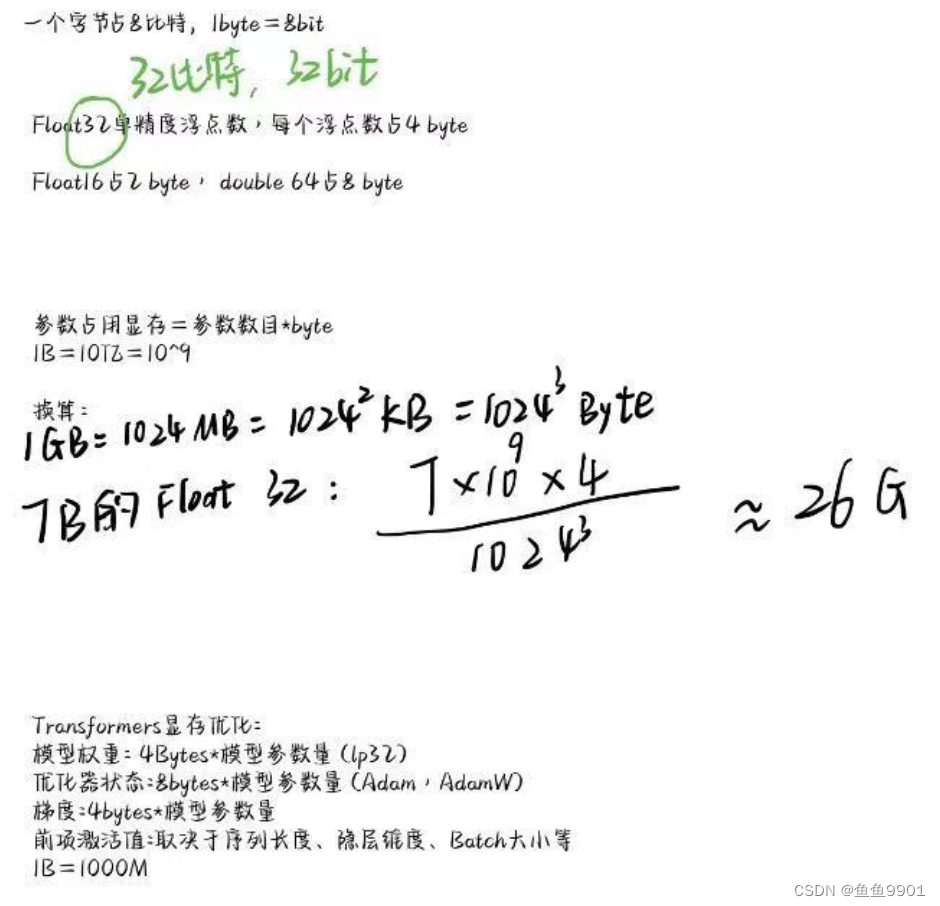前言
本功能的实现基于这篇笔记 http://t.csdnimg.cn/1I8ln,本文阅读过程中有疑惑都可以查看此笔记
实现思路:检测到按压ctrl +c +c 后,获取当前剪切板文字,调用百度翻译api。
实现结果:

完整代码在最后
实现过程
1 监控ctrl +c +c
在当前demo的功能中我们可以看到,当按压键盘时会调用nativeKeyPressed方法,并会打印当前按下的按钮字符串。

我们去掉一些打印的干扰:去除release和type的打印,以及press打印的前缀
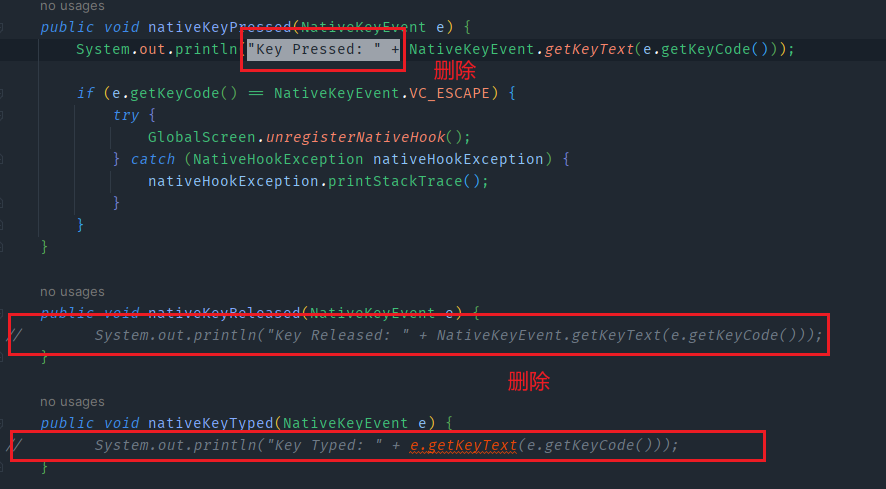
此时就只会打印我们的按键

现在去实现:当连续按压ctrl+c+c时,打印"你按下了ctrl+c+c哦"
思路:初始设置一个key字符串为"“,当检测到按压ctrl时,设置key为"Ctrl”,当不是Ctrl时,key拼接本次按压的按键,然后和"CtrlCC"做比较。如果相同,则说明用户连续按压了ctrl+c+c;
代码实现(红框内为添加的代码):
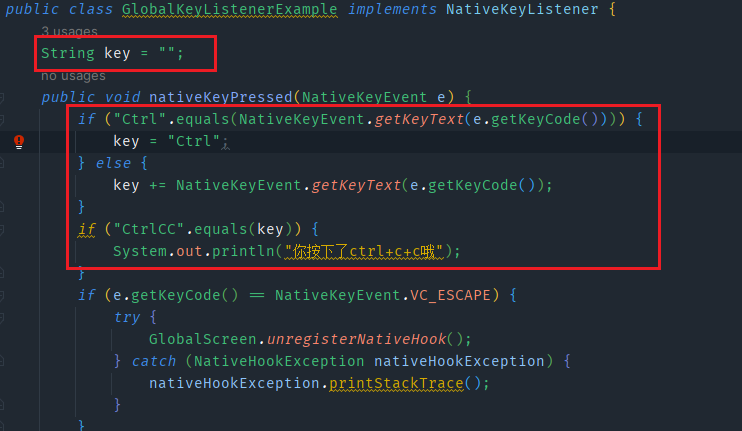
效果:

2 获取剪切板内容
在我们进行ctrl+c+c的操作过程中,第一个ctrl+c就会将鼠标选择的内容放到剪切板里,此时我们获取剪切板的内容,之后再用这个内容调用翻译api即可。
创建一个剪切板工具类
/**
* 剪切板工具类
*/
public class ClipBoardUtil {
public static String getClipboardText() {
Clipboard clipboard = Toolkit.getDefaultToolkit().getSystemClipboard();
//从系统剪切板中获取数据
Transferable content = clipboard.getContents(null);
//判断是否为文本类型
if (content.isDataFlavorSupported(DataFlavor.stringFlavor)) {
//从数据中获取文本值
String text = null;
try {
text = (String) content.getTransferData(DataFlavor.stringFlavor);
} catch (Exception e) {
}
if (text == null) {
return "剪切板为空";
}
return text;
}
return "剪切板无文本值";
}
}
在代码中调用:

效果:
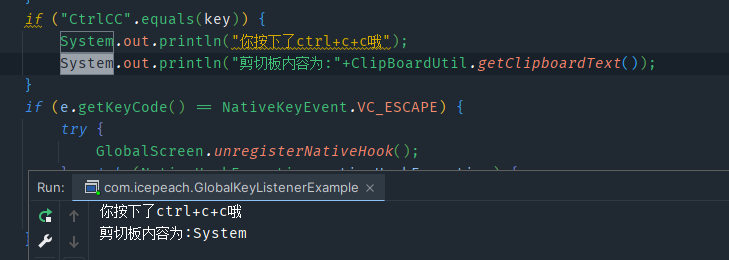
3 调用百度翻译api
注册账号,开通服务
搜索百度翻译开放平台,注册账号,实名认证后,可以申请高级版用户
标准版:注册,未实名
高级版:注册,实名
尊享版:企业认证

高级版每个月有100万字符的免费调用量,对于个人使用的话绰绰有余了。
注册后,在管理控制台中开通文本翻译服务

详细见文档:
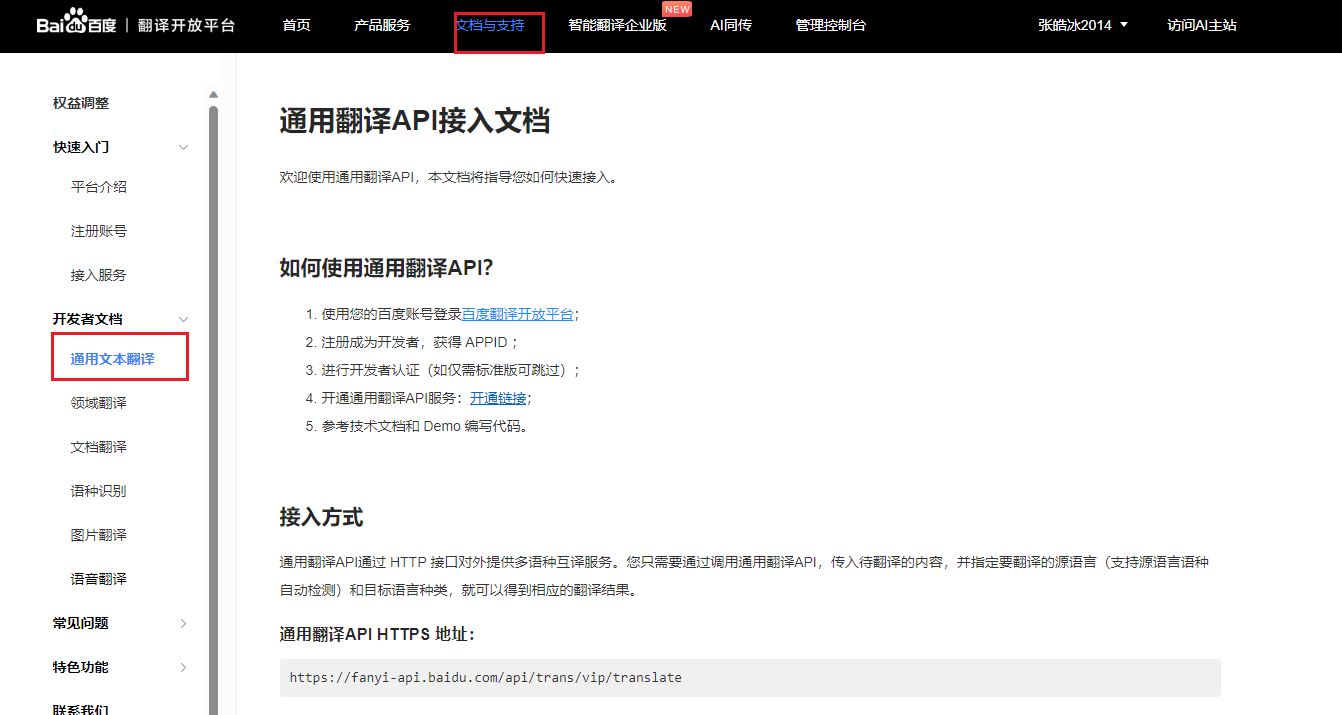
根据文档,编写代码
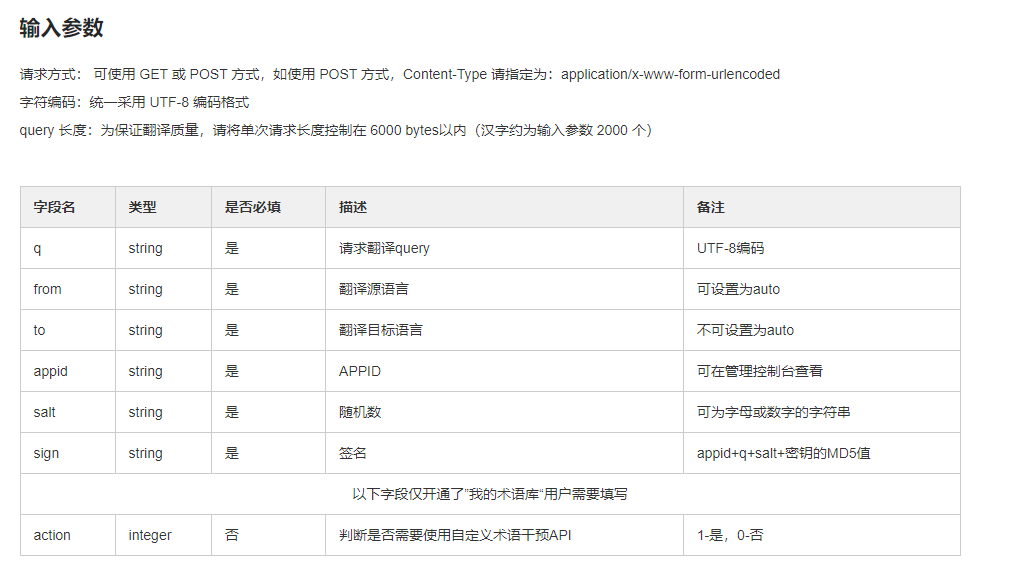
其中appid和密钥,在我们的管理控制台中

以下是调用方法的代码实现,我们创建一个TransApi类
import cn.hutool.crypto.digest.DigestUtil;
import cn.hutool.http.HttpUtil;
import java.util.HashMap;
import java.util.Map;
public class TransApi {
private static final String TRANS_API_HOST = "http://api.fanyi.baidu.com/api/trans/vip/translate";
private String appid;
private String securityKey;
/**
* 有参构造
* @param appid appid
* @param securityKey 密钥
*/
public TransApi(String appid, String securityKey) {
this.appid = appid;
this.securityKey = securityKey;
}
/**
* 调用方法
* @param query 翻译内容
* @param from 来源语言
* @param to 翻译语言
* @return 返回参数
*/
public String getTransResult(String query, String from, String to) {
Map<String, Object> params = this.buildParams(query, from, to);
return HttpUtil.get("http://api.fanyi.baidu.com/api/trans/vip/translate", params);
}
/**
* 初始化参数
* @param query 翻译内容
* @param from 来源语言
* @param to 翻译语言
* @return
*/
private Map<String, Object> buildParams(String query, String from, String to) {
Map<String, Object> params = new HashMap();
params.put("q", query);
params.put("from", from);
params.put("to", to);
params.put("appid", this.appid);
String salt = String.valueOf(System.currentTimeMillis());
params.put("salt", salt);
String src = this.appid + query + salt + this.securityKey;
//MD5加密
params.put("sign", DigestUtil.md5Hex(src));
return params;
}
}
其中调用接口的HttpUtil和加密的DigestUtil使用的是hutool中的类
hutool包的地址:
<dependency>
<groupId>cn.hutool</groupId>
<artifactId>hutool-all</artifactId>
<version>5.8.24</version>
</dependency>
ctrl+c+c获取剪切板内容并调用翻译接口
在GlobalKeyListenerExample类中添加TransApi类的初始化:

在获取剪切板内容后,将剪切板的内容调用翻译接口,并处理返回数据
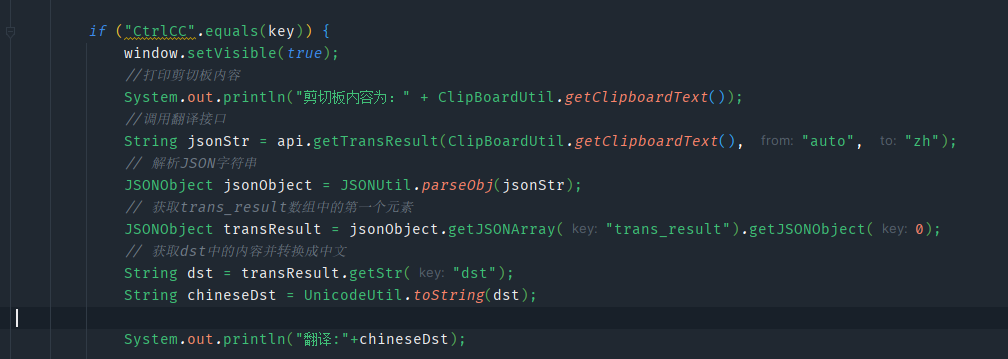
运行效果

我们看到这里,已经初步完成了ctrl+c+c进行翻译的功能,剩下的就是进行一些小优化,如生成窗口展示数据
4 小窗口展示剪切板内容和翻译内容
因为笔者对java的gui窗口不是很了解,这里使用chatgpt工具生成了小窗口,可能有些简陋,读者可以自己美化一下
新建一个MyWindows类
import javax.swing.*;
import java.awt.*;
public class MyWindow extends JFrame {
private JTextArea textArea;
public MyWindow() {
setTitle("Text Window");
setSize(400, 300);
setDefaultCloseOperation(JFrame.EXIT_ON_CLOSE);
textArea = new JTextArea();
//设置字体大小
textArea.setFont(new Font("SimSun", Font.PLAIN, 16));
// 自动换行
textArea.setLineWrap(true);
// 断行不断字
textArea.setWrapStyleWord(true);
JPanel panel = new JPanel();
setVisible(true);
add(textArea, "Center");
add(panel, "South");
}
//写入文本
public void writeText(String text) {
textArea.append(text + "\n");
}
//清楚文本
public void clearText() {
textArea.setText("");
}
public static void main(String[] args) {
MyWindow window = new MyWindow();
window.setVisible(true);
}
}
在GlobalKeyListenerExample类中初始化MyWindow:
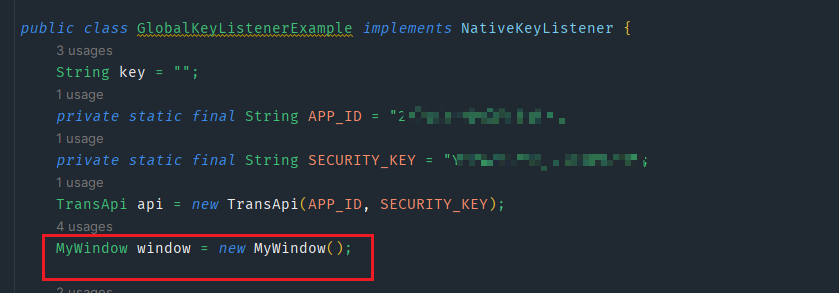
在获取翻译后,清除原来的文字,写入新的文字:

运行:

完整代码
ClipBoardUtil类,TransApi类,MyWindow类上文已給出完整代码。
GlobalKeyListenerExample类:
import cn.hutool.core.text.UnicodeUtil;
import cn.hutool.json.JSONObject;
import cn.hutool.json.JSONUtil;
import com.github.kwhat.jnativehook.GlobalScreen;
import com.github.kwhat.jnativehook.NativeHookException;
import com.github.kwhat.jnativehook.keyboard.NativeKeyEvent;
import com.github.kwhat.jnativehook.keyboard.NativeKeyListener;
import com.icepeach.Utils.ClipBoardUtil;
import com.icepeach.Utils.GUI.MyWindow;
public class GlobalKeyListenerExample implements NativeKeyListener {
String key = "";
private static final String APP_ID = "你的appid";
private static final String SECURITY_KEY = "你的密钥";
TransApi api = new TransApi(APP_ID, SECURITY_KEY);
MyWindow window = new MyWindow();
public void nativeKeyPressed(NativeKeyEvent e) {
if ("Ctrl".equals(NativeKeyEvent.getKeyText(e.getKeyCode()))) {
key = new String("Ctrl");
} else {
key += NativeKeyEvent.getKeyText(e.getKeyCode());
}
if ("CtrlCC".equals(key)) {
window.setVisible(true);
//打印剪切板内容
System.out.println("剪切板内容为:" + ClipBoardUtil.getClipboardText());
//调用翻译接口
String jsonStr = api.getTransResult(ClipBoardUtil.getClipboardText(), "auto", "zh");
// 解析JSON字符串
JSONObject jsonObject = JSONUtil.parseObj(jsonStr);
// 获取trans_result数组中的第一个元素
JSONObject transResult = jsonObject.getJSONArray("trans_result").getJSONObject(0);
// 获取dst中的内容并转换成中文
String dst = transResult.getStr("dst");
String chineseDst = UnicodeUtil.toString(dst);
System.out.println("翻译:"+chineseDst);
window.clearText();
window.writeText("剪切板内容为:" + ClipBoardUtil.getClipboardText());
window.writeText("翻译:"+chineseDst);
}
if (e.getKeyCode() == NativeKeyEvent.VC_ESCAPE) {
try {
GlobalScreen.unregisterNativeHook();
} catch (NativeHookException nativeHookException) {
nativeHookException.printStackTrace();
}
}
}
public void nativeKeyReleased(NativeKeyEvent e) {
// System.out.println("Key Released: " + NativeKeyEvent.getKeyText(e.getKeyCode()));
}
public void nativeKeyTyped(NativeKeyEvent e) {
// System.out.println("Key Typed: " + e.getKeyText(e.getKeyCode()));
}
public static void main(String[] args) {
try {
GlobalScreen.registerNativeHook();
} catch (NativeHookException ex) {
System.err.println("There was a problem registering the native hook.");
System.err.println(ex.getMessage());
System.exit(1);
}
GlobalScreen.addNativeKeyListener(new GlobalKeyListenerExample());
}
}


